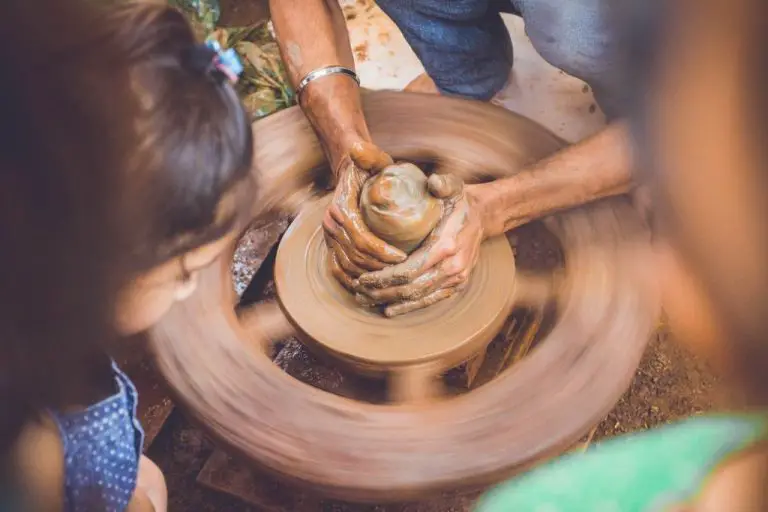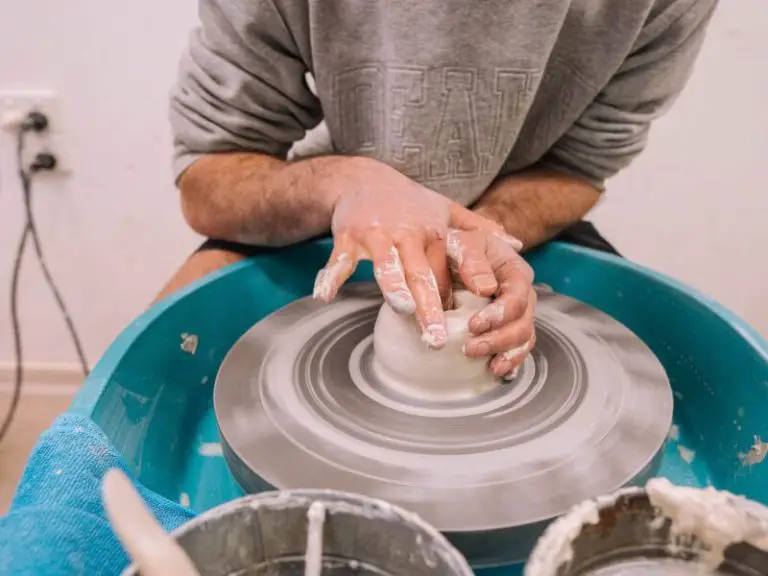What Are The 5 Pottery Items?
Pottery is one of the oldest human inventions, dating back over 20,000 years to when early humans began storing and cooking food in clay vessels. Over time, pottery developed from basic functional items into decorative art forms. While there are many varieties of pottery, historians generally categorize pottery into 5 main types based on the clay composition and firing method used to produce them.
The 5 main types of pottery items are earthenware, stoneware, porcelain, bone china, and terra cotta. Earthenware is the most basic and oldest type, made from clay containing iron and other minerals fired at low temperatures. Stoneware is stronger and non-porous due to higher firing temperatures. Porcelain features a white, translucent body achieved through firing a refined clay called kaolin. Bone china contains bone ash for added strength and translucency. Terra cotta utilizes a coarse clay that retains its natural red-orange color through firing.
This article will provide an overview of each of the 5 main pottery types, their history and common uses throughout human civilization.
Bowl
Bowl is one of the earliest and most common pottery items, with a history tracing back thousands of years to ancient civilizations around the world. Bowls have been a staple for serving food and drink throughout history (The Content Authority, 2022).
Bowls come in a variety of different shapes, styles, and sizes. Some of the most common types of ceramic bowls include:
- Serving bowls – Large, deep bowls used for serving food at the table.
- Soup bowls – Bowls with wide rims designed for eating soups and stews.
- Salad bowls – Broad, shallow bowls optimal for tossing and serving salads.
- Cereal bowls – Smaller bowls for breakfast cereals and porridge.
- Rice bowls – Asian-style short bowls used for rice and noodle dishes.
Bowls can be highly decorative pieces with ornate patterns, or simple and functional items for everyday use. Their versatility and variety has made them an essential item across cultures and eras.
Mug
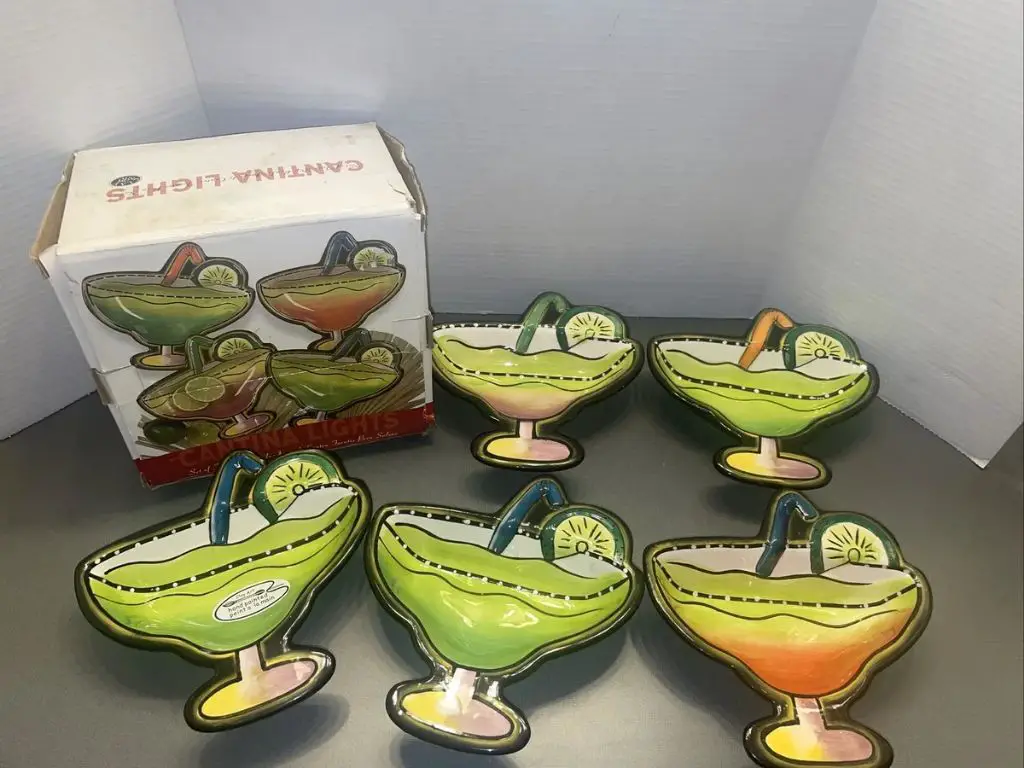
Mugs are commonly used for drinking hot beverages such as coffee, tea, and hot chocolate. They have a cylindrical shape with a handle to allow for easy gripping while holding hot liquids. Mugs are often decorated or glazed, adding visual interest and unique designs. Some key features of mugs:
- Cylindrical shape with a wider bottom and narrower top opening for drinking.
- Handle on the side allows secure gripping with one hand.
- Made from materials like ceramic, glass, or durable plastics.
- Often decorated with glazes, patterns, or custom designs.
- Well-suited for hot drinks like coffee, tea, hot chocolate, apple cider, etc.
- Range in sizes from 8-20 oz. capacities.
- Dishwasher and microwave safe.
- Used daily in homes, offices, restaurants, coffee shops.
Mugs have been around for thousands of years, with evidence of early mugs found in China dating back to 10,000 BCE. Some of the earliest mugs were made of materials like wood, bone, and horn (Source: https://creceramics.com/blogs/ceramics-in-your-life/sip-in-style-handmade-ceramic-mugs). Modern mugs are ubiquitous and make drinking hot beverages convenient and comfortable.
Vase
Vases have been an integral part of human civilization for thousands of years. Archaeological evidence shows that ancient cultures including the Greeks, Romans, Chinese, and Egyptians all used vases and urns to hold flowers, display artistic designs, and even store food or other objects. Vases continue to be a versatile ceramic item today.
The primary function of a vase is to hold cut flowers and display floral arrangements. Vases provide stability and support for fresh flowers, allowing people to enjoy their beauty for days or weeks. They are a decorative and artistic way to showcase flowers in the home or give them as gifts. According to the experts at GlobalReach Ceramic, vases allow “fresh cut flowers a longer vase life” by properly holding the stems and providing water.
Vases come in endless shapes, sizes, colors and designs. There are classic rounded Greek or Roman style vases, intricate Asian porcelain designs, modern geometric vases, and vases shaped like animals, shells, bubbles, or abstract sculptures. Some vases are purely functional while others make a strong artistic statement. The diversity of vase styles allows people to match them to their personal taste and interior decor.
While flowers are the most common use for vases today, they have historically held many other objects. Ancient vases stored food, wine, oils and perfumes. Some vases, like the ancient Greek amphora, were designed for transporting goods. Vases can hold decorative items like seashells, stones, beads, or potpourri. The visual interest and versatility of vases make them a popular ceramic item through the ages.
Plate
Plates are one of the most common pottery items, used for serving food at meals. Plates are typically flat with slightly raised edges to help contain food while eating. They come in a variety of sizes, from small plates and saucers to large dinner plates up to 12 inches across.
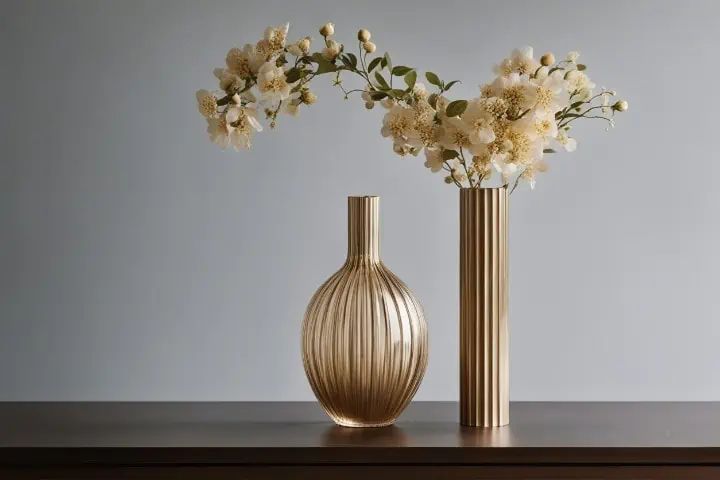
Plates were first developed as early as the Neolithic period, when early humans began making pottery from clay. Simple rounded bowls evolved into flatter plates with edges to make serving foods easier. Plates became more common in the 18th century as European table manners emerged. Multiple courses and utensils required flat plates and dishes to properly serve and consume meals.
Today, plates are available in a vast range of styles, materials like fine china or stoneware, and decorative designs. Standard plates range from 7 to 12 inches for everyday meals. Smaller plates like saucers or appetizer plates are used for side dishes, desserts, or finger foods. Larger platters can be used for serving main entrees family-style at the table. Plates make up a basic and essential dining ware set.
Jar
Ceramic jars have a long history of being used for storage of food, liquids, and other items. They are cylindrical in shape, usually wider than a traditional mug or cup. Ceramic jars often come with lids to keep the contents fresh and protected.
Archaeologists have found fragments of ceramic jars dating back thousands of years across many ancient cultures. These vessels were essential for storing and transporting goods. Ceramic jars keep items protected and can be sealed with a lid, making them excellent long-term storage solutions. Even today, ceramic jars are still commonly used for canning, storing dry goods, and fermenting foods and drinks.
The cylindrical, larger shape allows jars to contain a greater volume than a cup or mug. The wider mouth also makes them easier to fill, clean, and access the contents. Ceramic jars come in many sizes from small jelly jars to large oil and pickle jars. Smaller jars may have handles for portability. Lids can be sealed or screwed on to keep food fresh and prevent spills.
Overall, the unique shape, sealing lids, and durable ceramic material have made jars a staple storage vessel throughout history and into modern times. Ceramic jars continue to be a popular and useful kitchen item.
Sources:
https://globalreachceramic.com/blog_details/What-is-Ceramic-Jars
https://www.amazon.in/Ancient-Ceramic-Handmade-Jar-Kitchen/dp/B0CFRVWCVB
Decorative Figurines
Decorative figurines are pottery items made purely for aesthetic purposes, often sculpted into whimsical shapes of animals, people, or objects. They serve no practical function beyond visual appeal and creative expression. Ceramic figurines have a long history, dating back thousands of years to ancient cultures around the world. However, they reached the height of popularity as knickknacks and collectibles during the porcelain boom of 18th and 19th century Europe.
Contemporary ceramic artists like Shary Boyle craft figurines that consider the social history of ceramic collectibles through a feminist lens, as described in this article: https://hifructose.com/2019/09/14/the-ceramic-figures-of-shary-boyle/. Her imaginative works subvert traditional decorative tropes and archetypes. Other artists, like Gerit Grimm, also create conceptual figurines that offer cultural commentary, according to this source: https://issuu.com/presspad/docs/i18681.
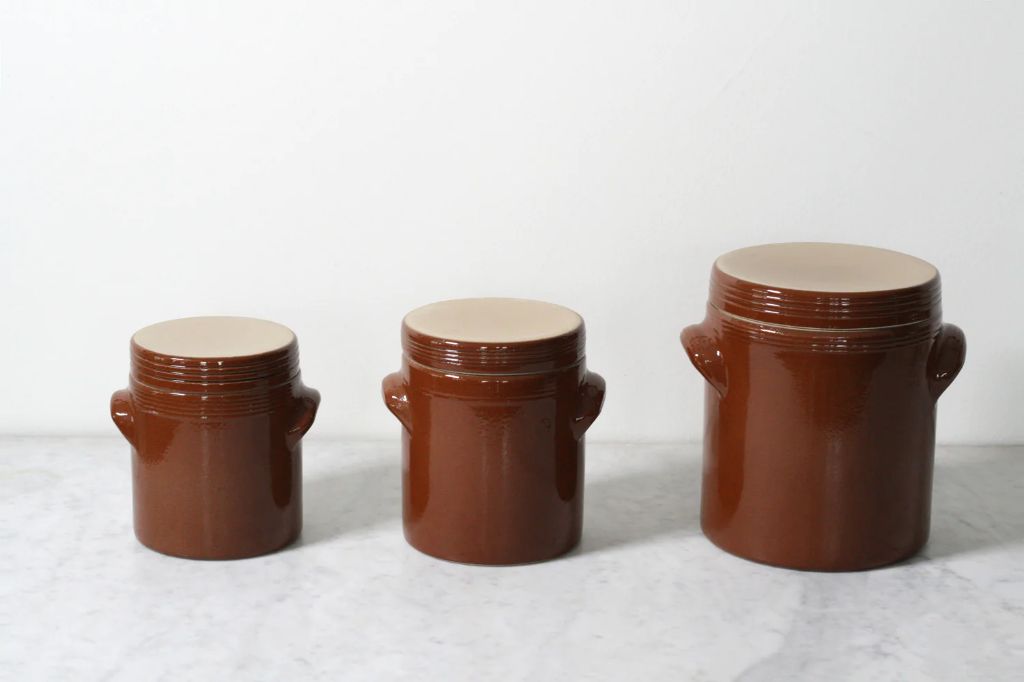
While their practical usage is limited, decorative ceramic figurines remain popular for their whimsical charm, artistic craftsmanship, and ability to imbue spaces with personality. Their varied shapes and designs provide collectors endless options for curating visually interesting displays.
Teapot
Teapots are specially designed vessels used for brewing and serving tea. They have a distinctive shape featuring a handle, spout, and lid. The teapot was invented in China and has a long history dating back to the Yixing pottery tradition during the Ming Dynasty. According to the Senchateabar blog, “The ceramic teapot is to China what the Japanese tetsubin is to Japanese tea drinking. These tea vessels are essential to the tea ceremony in their respective cultures.”
The teapot’s design allows tea leaves to steep and expand fully. The handle makes it easy to pour tea into cups. The spout enables a smooth pouring motion without too many tea leaves escaping. And the lid helps retain heat and aroma.
Over the centuries, teapots took on artistic significance in China and Japan. Each culture developed unique teapot shapes and decorative styles. Now teapots are still integral parts of tea ceremonies and social tea drinking around the world.
Planter
Planters are a type of pottery specifically designed for holding plants, flowers, and small trees. Unlike regular pots, planters have drainage holes in the bottom and often come with a saucer to catch excess water and prevent spills.
Unglazed terra cotta and glazed ceramic planters have been used for centuries to cultivate plants. Unglazed terra cotta allows air and moisture to pass through porous walls, while glazed ceramic planters provide a more decorative appearance but less breathability. Planters first emerged in Mesopotamia over 6000 years ago and became more elaborate throughout ancient Egyptian, Greek, and Roman civilizations as ornamental horticulture grew in popularity.
American potteries were producing ornate ceramic planters by the 18th century as gardening and horticulture gained acceptance, according to the History of Plant Containers. Glazing techniques advanced through the 19th century, allowing for brightly colored decorative planters.
Today, planters come in a vast array of sizes, shapes, materials, and colors to fit any style. They continue to be a practical way to cultivate plants and also make an aesthetic statement in home decor.
Conclusion
In summary, the 5 main types of pottery items are bowls, mugs, vases, plates, and jars. Bowls have been a staple kitchen item for thousands of years, used for serving soups, cereals, and more. Mugs are perfect for drinking hot or cold beverages. Vases allow us to artistically display cut flowers and other decorative botanicals. Plates are essential for serving individual portions of food. Jars store, preserve, and transport all kinds of foods and other items.
Pottery has remained popular for millennia thanks to its versatility, functionality, and aesthetic qualities. Clay can be molded into an endless variety of shapes, decorated in countless ways, and used for cooking, eating, storing, and displaying. The tactile nature of working with clay has meditative benefits as well. As this article discusses, creating pottery with one’s hands results in a calming, grounding experience that many find therapeutic. The continued prevalence of pottery today speaks to its timeless appeal and irreplaceable usefulness in daily life.

